“Drawing has always been a way for me to meditate, taking the time to focus on being playful, and on composing”
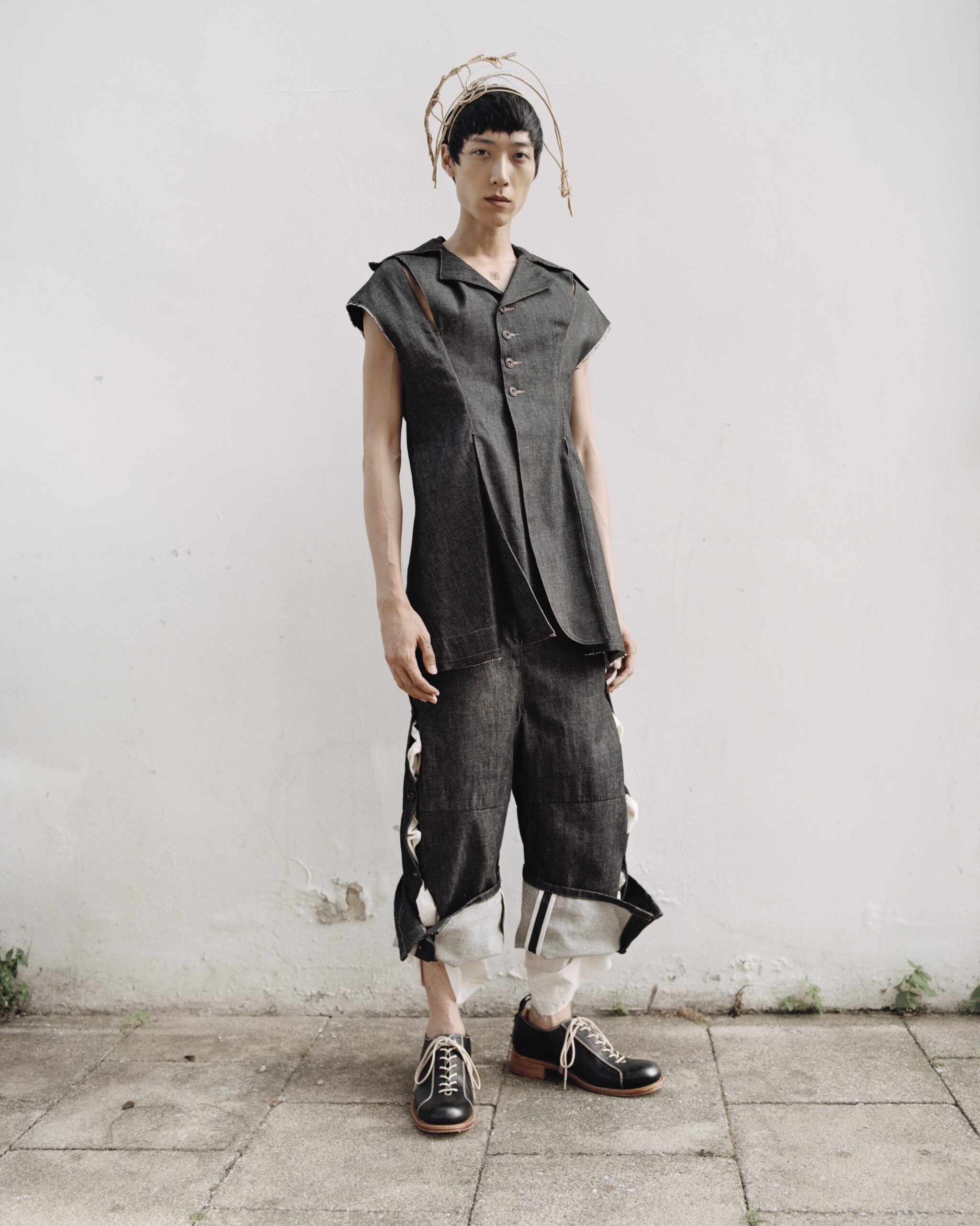
In transcending time, TÍSCAR ESPADAS keeps clothes still. Having graduated from the ROYAL COLLEGE OF ART with the BURBERRY Scholarship, Espadas founded her eponymous label in 2019. Her designs were quickly met with love, with her first collection CAPÍTULO I being the finalist for the BIG Design Award in TOKYO. Since then, she has developed one of the core facets of the label: diverse craftsmanship. The clothes of Tíscar Espadas flow through the hands of many artisans, all of whom work together to create refreshingly nostalgic designs. Curious to know more about her aesthetic universe, Glamcult spoke to Espadas about her captivating process, most dreamy recent collection, and what it means to create in today’s world.
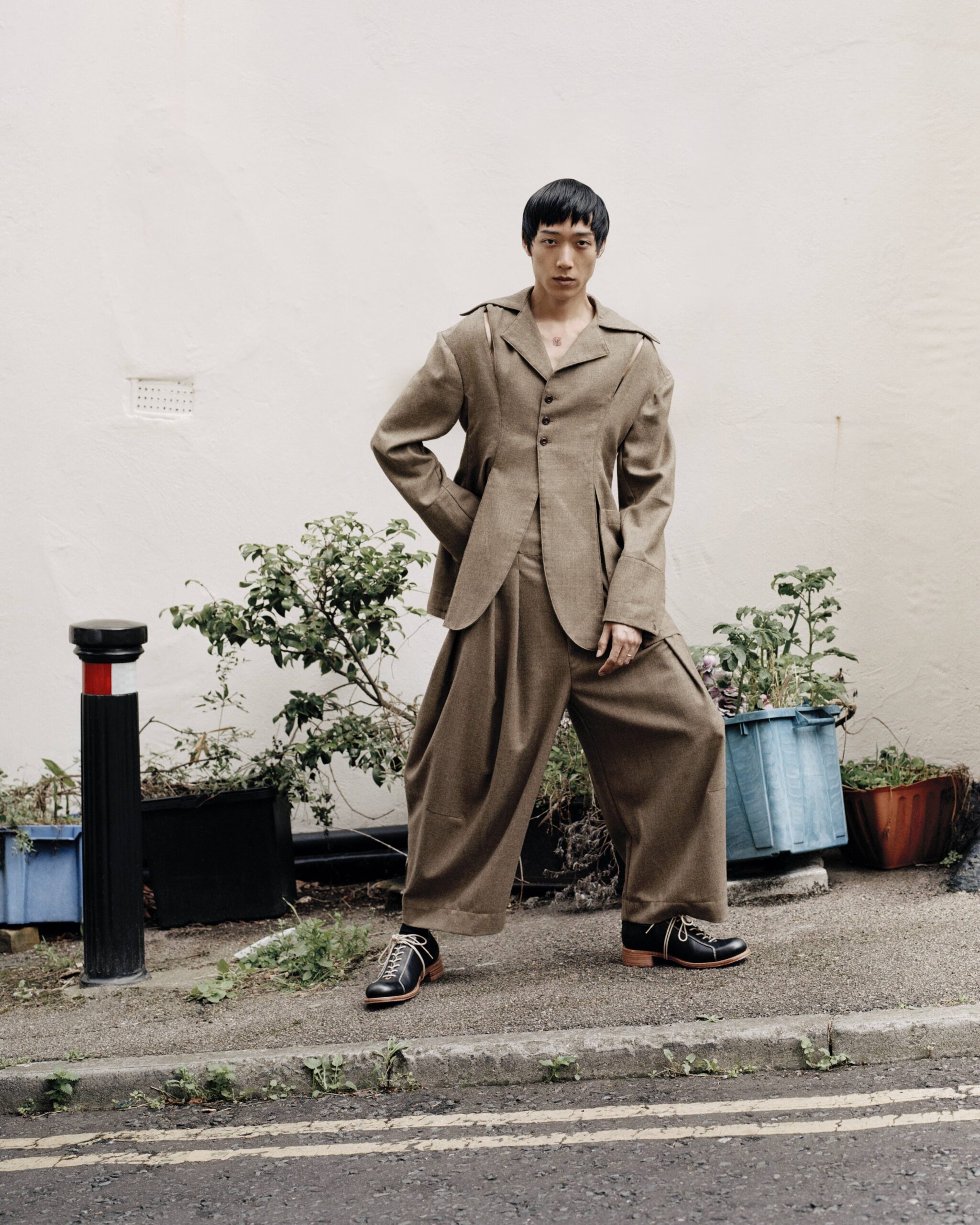
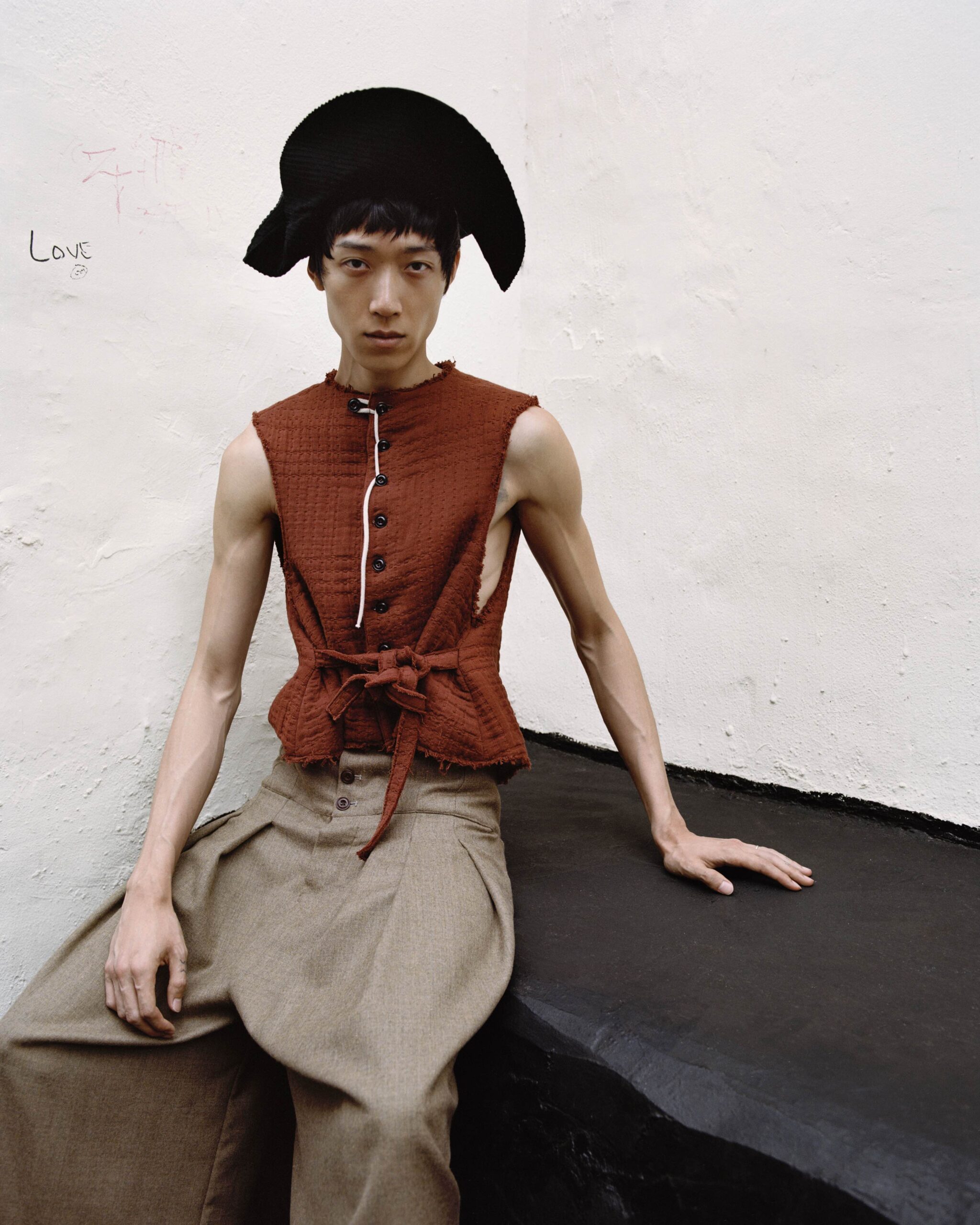
Hey Tíscar! How are you today?
I’m in my studio in MADRID—so hot but also really good! I appreciate being in this moment talking to you about the work we do from my studio. It is something that some time ago was only a dream and today… it is the reality. Just this morning I was thinking about how happy I am. There are always things to complain about, but today when I came to the studio I had a moment to realise how lucky I am.
That’s so lovely to hear! Let’s start by taking a little trip down memory lane, could you tell me about how you’ve gotten to where you are today?
The journey has been more like a run than a walk. I’m always running and running, and sometimes I run too quickly, making it harder to continue as it can be very tiring. There have been many surprises along the way. Sometimes you try to map out your path, planning what you want to do, or how you imagine yourself in the future, but I’ve realised the big moments in life, (while they may sometimes bring you to your dreams) often bring you to places you’ve never even imagined.
I come from the south of Spain. My grandmothers are seamstresses and my dad’s side are into the fine arts like sculpture and painting. But art has never been strict with my family, everyone is fluid in how they create. Sometimes, as I reflect on memories, I realise that there are pieces of artwork I have created that are strongly influenced by these past moments. We are collectors, passengers of time.
You have had an interesting education and introduction to the industry—can you tell me about this?
I studied fashion design in Madrid. I was studying and doing internships at the same time, always looking for new things to do and experience. I wanted to study fashion but also understand how the fashion world actually worked; school doesn’t always teach you what it’s like in the real world. This is where I realised that the industry is ultimately a business which relies on having and making connections. I then went on to do my transformative master’s at RCA LONDON, which allowed me to explore, well, me. Although I had work experience, when working for a brand you are working for others, not yourself. I was also working with tailors, so I knew and understood specifically the language of tailoring. For the first time, I was given the space to learn my own language by studying my drawings and design sketches. Through a long process of making, trying and editing, I soon delved into translating these drawings into a pattern-making process and developing the freedom and style of clothing I create today.
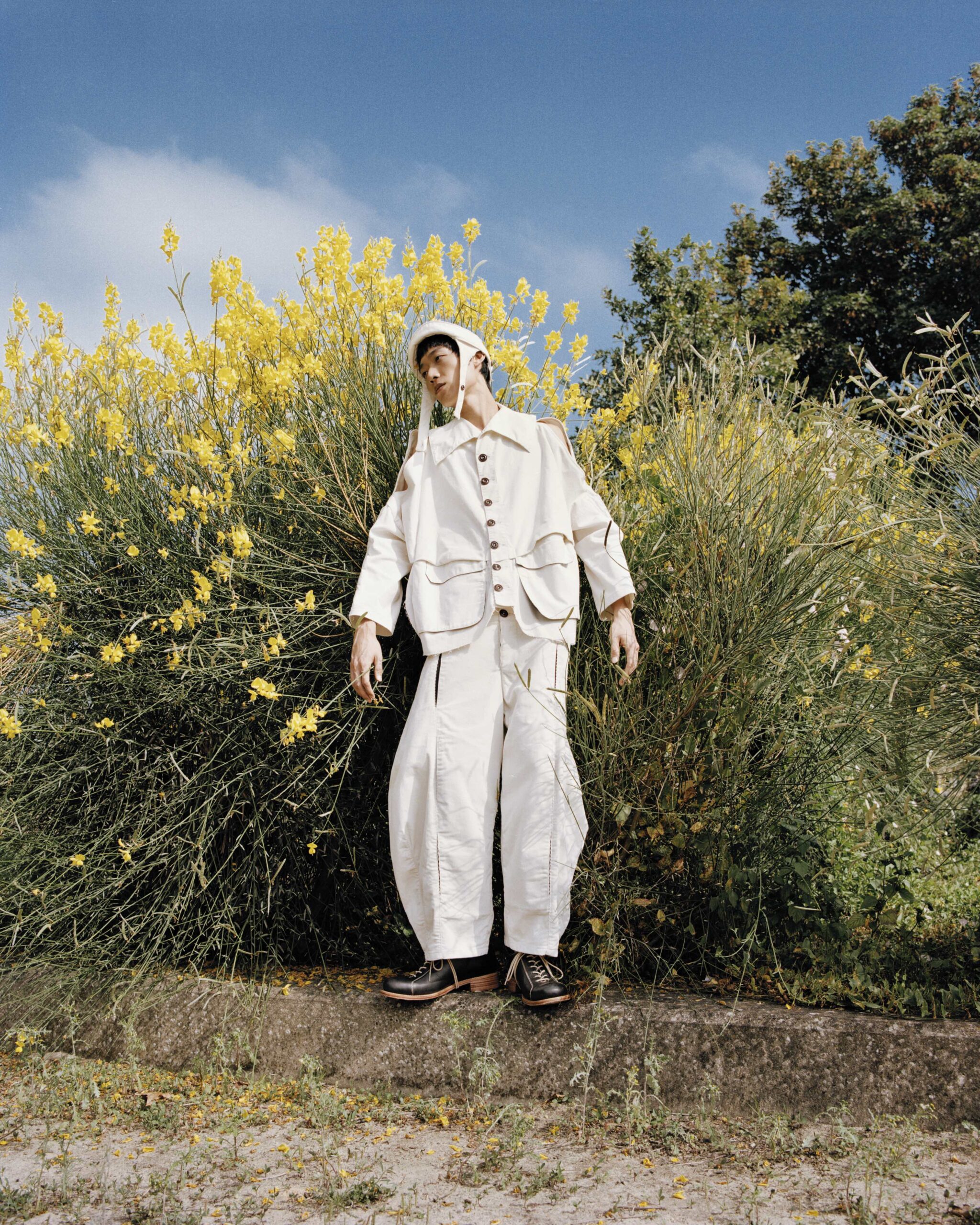
Combining romantic nostalgia with a past that is hard to place in time, your designs hail mythical and fantastical elements. How would you describe the dream world you’re creating, and who are you designing for?
I try to design things intuitively and aim to build timeless pieces. This is my understanding of fashion; creating pieces that allow the wearer to dream, whilst also being able to keep and wear them for a long time. For me, this is really important in the design process, from the pattern making to the material selection we always put in the most care that is possible. Moreover, most of the pieces are versatile and have different ways of wearing them.
Sometimes I wonder if we could make a collection without any references. Of course, we are people and we will always take inspiration from things consciously or unconsciously. However, I like to find inspiration beyond just images. I look for moments of gesture. There are so many moments where I see something that I wish I could do. Like the masculinity and femininity of the Flamenco dancer. I want to grasp the beauty of these movements. I also inherently get inspiration from 19th and 18th century Spain, as it’s where I come from. I then bring everything I’ve collected through my lifetime together and despite there being no obvious theme between them, it all unites in the end.
For any of this to make sense I sketch a lot. Sometimes I move with the subconscious, making lines that I try to read later to make patterns. I never know how to start a collection, so I start with the super abstract and develop it from there. Within this, sometimes, the mistakes become the best part! I think it’s what I enjoy most about the process, seeing how I imagined the collection and seeing how it actually turned out.
Is it normally very different?
Completely. I would love to see maps showing how things changed from the original sketches. I think that would drive everyone crazy!
Could you elaborate more on your sketches? How does drawing play a role in your process?
They are part of the final garment just as the material and the pattern are. The sketches are not just there to literally make the collection, as I also sketch to communicate. For me, drawing is a form of communication, the same way as someone else may use words, music or sound. Drawing has always been a way for me to meditate, taking the time to focus on being playful, and on composing. I’m not someone who focuses on what I have in front of me or sketches very realistically, so sometimes this process can be very frustrating but when I do arrive at something I’m like “Wow I did not accept to arrive here from this drawing.” And other times I destroy it because it leads to nothing.
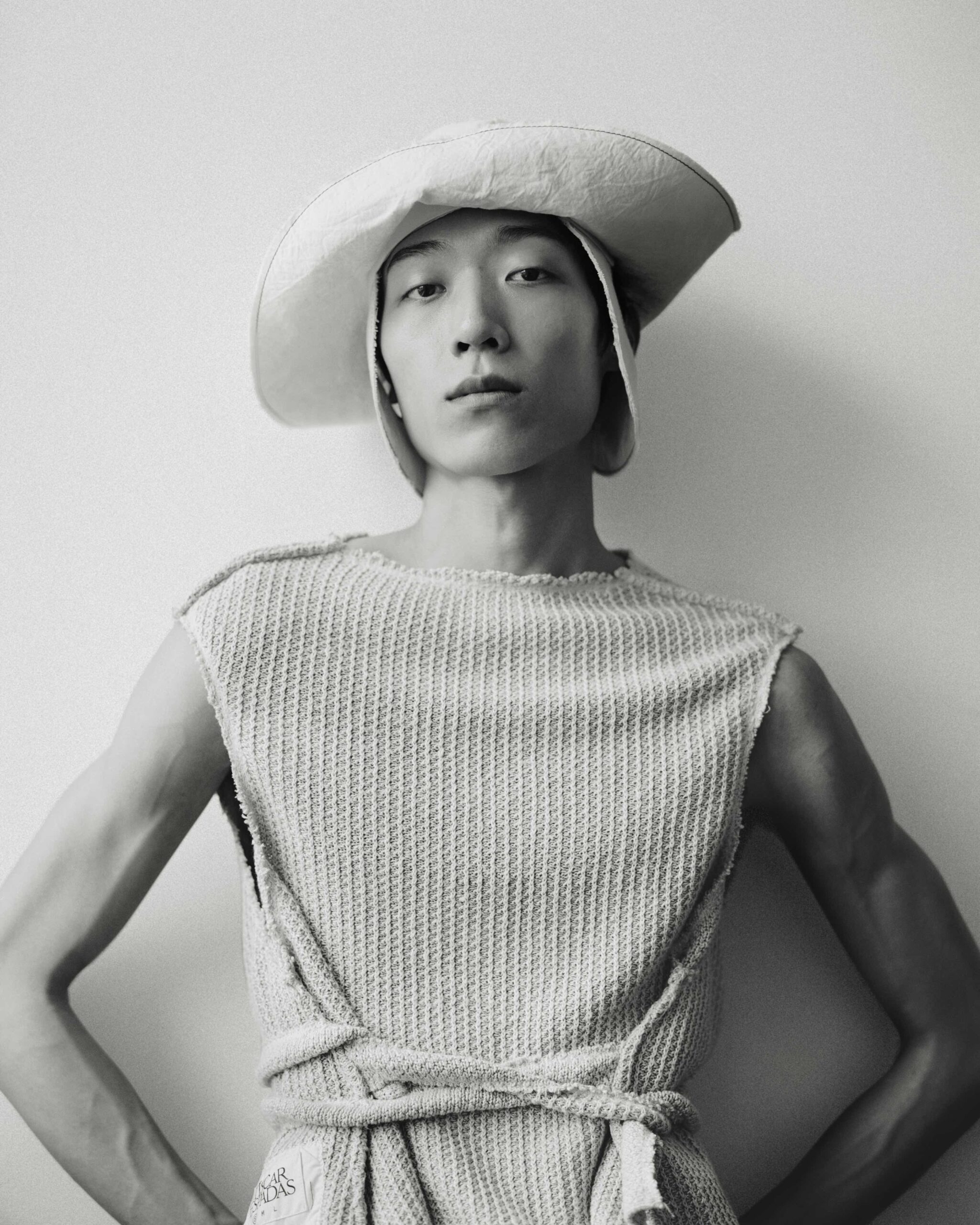
Your collections are menswear-focused, however, the pieces themselves are not necessarily traditional menswear. What does working with so-called “menswear” mean for you?
It’s something that took shape over time. I started doing menswear partly because of my experience with tailoring. But also, with womenswear, I had too many images of what it was. Menswear on the other hand felt more like a blank canvas that I could play around with.
So, I started to build this character more focusing on men, but the clothing doesn’t have a gender. My clothes are for humans. We have a lot of women clients.
I am drawn to this idea of a blank canvas. Would you say that you have influences in fashion? Or is this all coming from your heart?
It is kind of a mix of both. I like the work of some people who I admire. And it is through other people that I discovered alternative ways of making fashion, inspiring me in how I view the fashion industry. But ultimately, seeing what I didn’t want to do inspired me to try and do and seek out inspiration for what I do want to do. I think I get inspired by the people I am around the most, as a human and as a creator. I am also lucky with my family. They have always inspired me by never giving me any limits on what I can do.
It’s refreshing to see that you find inspiration outside of the industry and are grounded in the world around you. You often collaborate with artists across all kinds of disciplines, can you tell me a little more about this intersectional approach and mixing of crafts?
I think collaboration between artists is essential to making any work complete. I’m the kind of person that wants to do everything. But sometimes you need to recognise your limits. I’m very lucky to be surrounded by all different kinds of artists who believe in the work we do. I think the fashion industry has been damaged in the last few years and I want to somehow recover the ancient traditions of craftsmanship that are seemingly lost in the contemporary modes of production. I like to work with artisans, like knitwear designers— such as ILANA BLUMBERG and CARMEN PERAITA—and shoemakers to help keep these traditions alive. Through our work together I hope to make these handmade products valuable and teach other generations about these ancestral modes of creating.
We just made our first-ever shoe which required an amazing collaboration. This project is truly so exciting because I got an inside look into the process of these shoemakers in BARCELONA called ALDANONDOYFDEZ —and let me tell you, it’s beautiful. Our goal is to combine the old techniques with new tools. I asked my ceramist friend SERAFIN FREI to help us design the shoe’s sole. We then 3D printed his design and sent it to a wood maker who created wooden soles using old 20th-century machines. What makes me happy about my work is finding these places and people who believe as much in the project as we do. At the end of it, everyone’s work shines through. From the designers and artists to the people that wear it, it’s just all different channels that make up the full image of what we are doing.
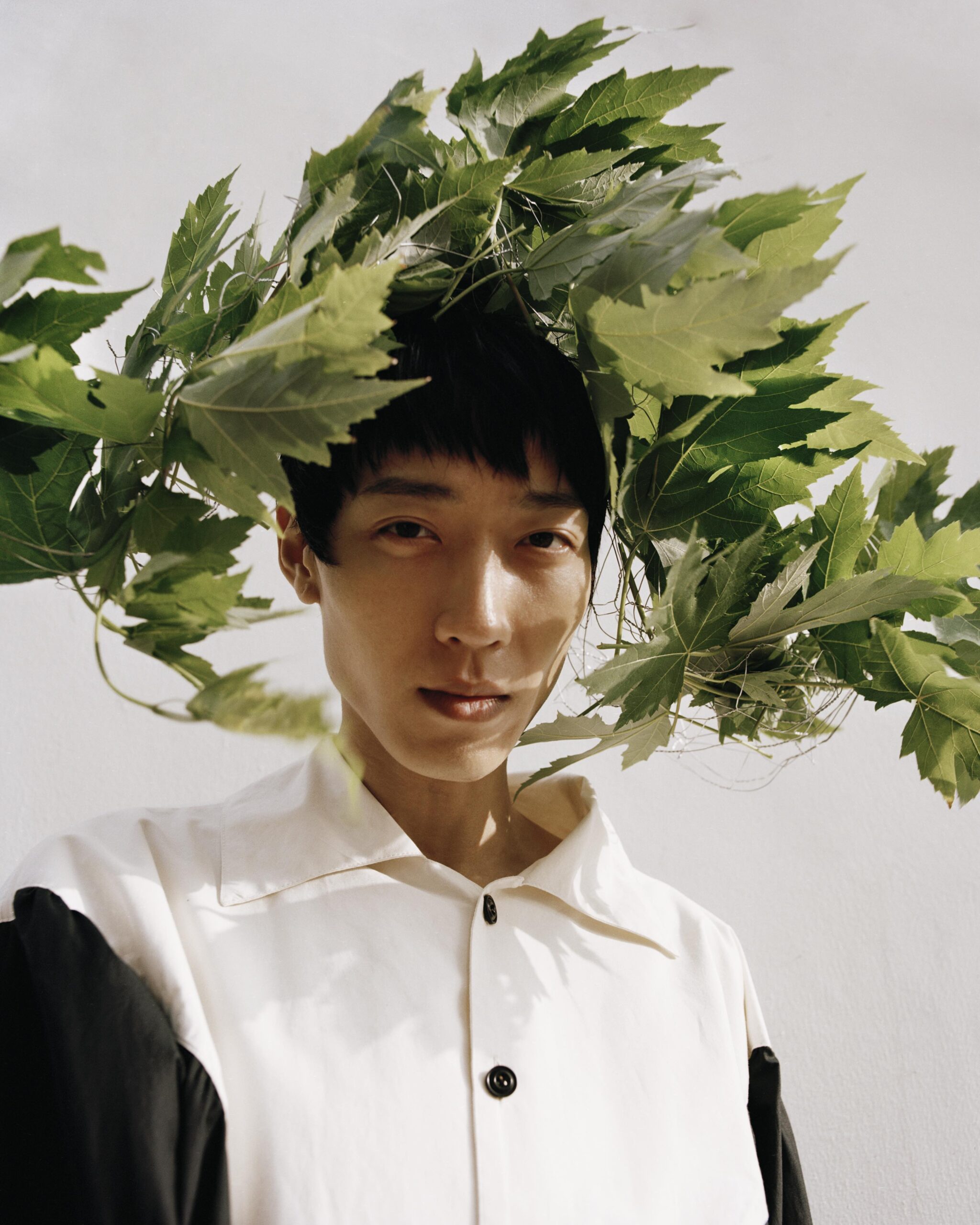
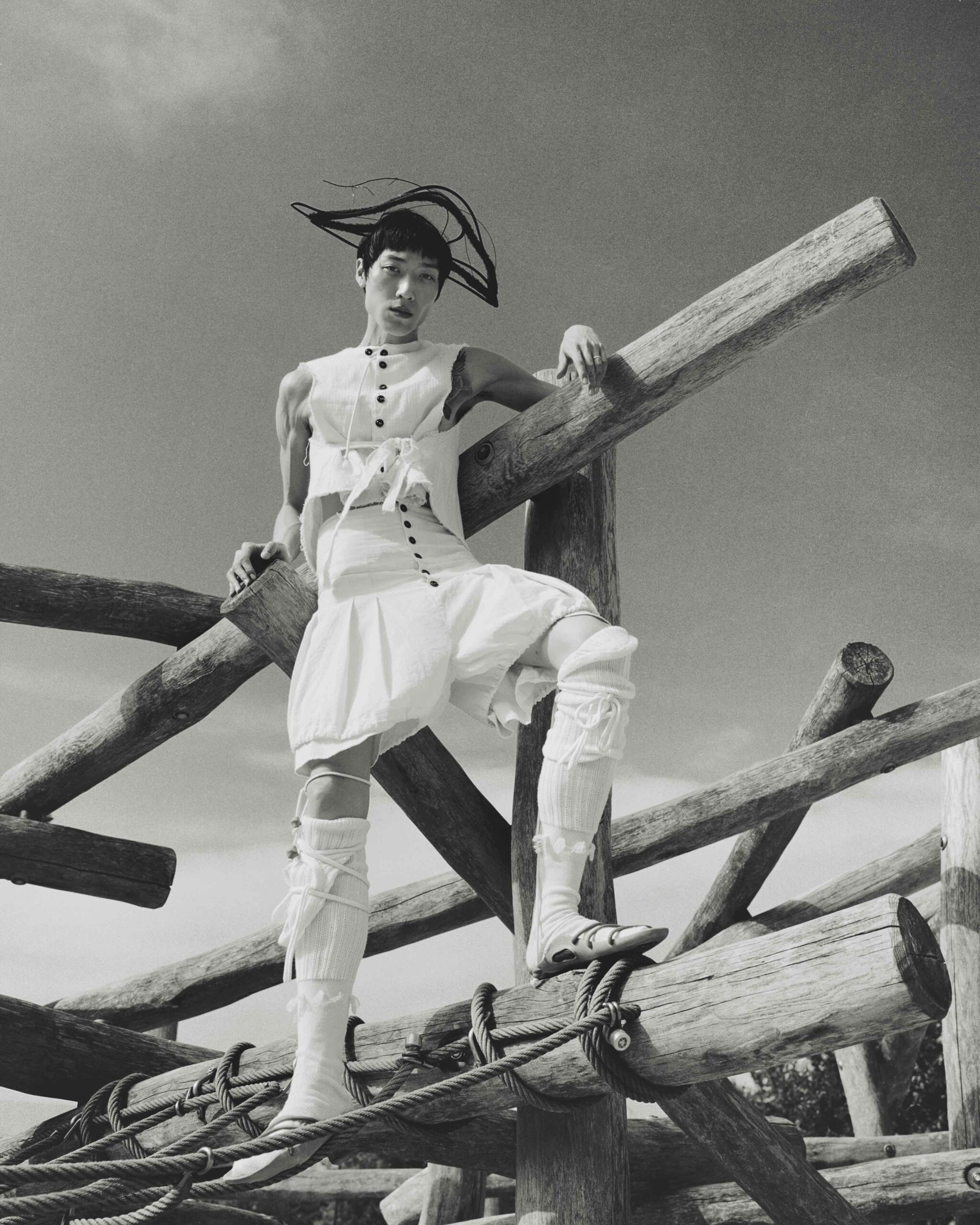
That’s so beautiful. Exploring numerous crafts while innovatively incorporating modern technology into age-old artistic traditions. Wow.
Fashion is such a big universe. We have so many ideas, if only we had the budget to make it all happen! We always laugh because it’s like we’ve found the most interesting characters. Each of us is very different from the other but everyone’s dreams come together to make something to achieve this idea of beauty.
I need to know about your most recent collection Chapter Five. What was the process like?
Many people have told me that this collection looks very different from the stuff I’ve made before, but yes, I think it’s good that this collection may look a little different than the others. That’s the point. I know what I can do, pushing beyond those boundaries can be challenging. My goal is to surprise you, and if we manage to accomplish that, then it’s a success.
And what was the primary inspiration for this collection—or should I say, inspirations?
This collection came from the idea of travelling and how garments are vehicles of movement. We are collectors, we collect things and we need to carry those things. This drove the initial idea and we then tried to look for examples of travel around us in culture. We turned to the god HERMES and his hat with the wings. Then we realised that Hermes was a messenger to the gods—he was a traveller who carried. Everything started to come together and our ideas became more solidified. I always need to stop and revisit past collections as we are working to make sure the new one is 100%. I don’t believe in the current fashion industry system with its trends. I want to make things that stay. Things that don’t move with trends and don’t move with time. By revisiting past collections, I can make sure the new one isn’t removing the past ones.
My idea of the brand is that all the collections add a layer to each other to tell a story. They are all chapters. The best pieces of the collection act as a starting point to make the next chapter. It’s a beautiful process to start with what you already have, like taking a garment and asking, “how many variations of this can I do?”
Out of everything that you’ve created for this collection, which is your favourite piece?
I don’t have any! I can never choose because they are all special. Whenever I look at a garment I remember the whole process of making it and it becomes so precious. Take for example a big piece, like a coat. I see the patterns and the materials. It is all playful. Or anything that is screen printed. I wanted to screen print for a long time and finally, we made it happen. All those are special to me because of that. I attach memories to all the garments and it makes me love them all in their own way!
What can we expect from you in the future? Dreams for your brand?… Or maybe even just life? Like I said before, the fashion world is a business. It’s very difficult for a small emerging brand to find their point. Sometimes our biggest issue is that we are not so realistic. This makes us do things that we don’t have the time or energy for because we don’t have the money behind it. So, my dream is for the brand to be more established. Right now, I work in the morning all through the night. I hope that at some point it becomes more balanced. Of course, I still love it, the brand is like our baby. My goal is in the end for it to work, for people to buy it and enjoy everything about it.
And lastly, the theme of this issue is Night. What does night mean to you?
I love it. It is abstract but at the same time, it isn’t abstract at all. If we go back in history we will find we have always been connected to the night. People have created art about the night for centuries. There is beautiful poetry behind the stars and the universe. As well as the shadows… We are all a part of this huge universe and yet we are nothing in the grand scheme of it. This is something that might make us a bit nervous, but I think it’s good. I like the power of the moon and the stars and how many mysteries the night has…It is magical. It inspires me. I don’t even know how to put it into words! It is such a big topic that seems to escape human description no matter how many times we try to capture it. It is beautifully disturbing.
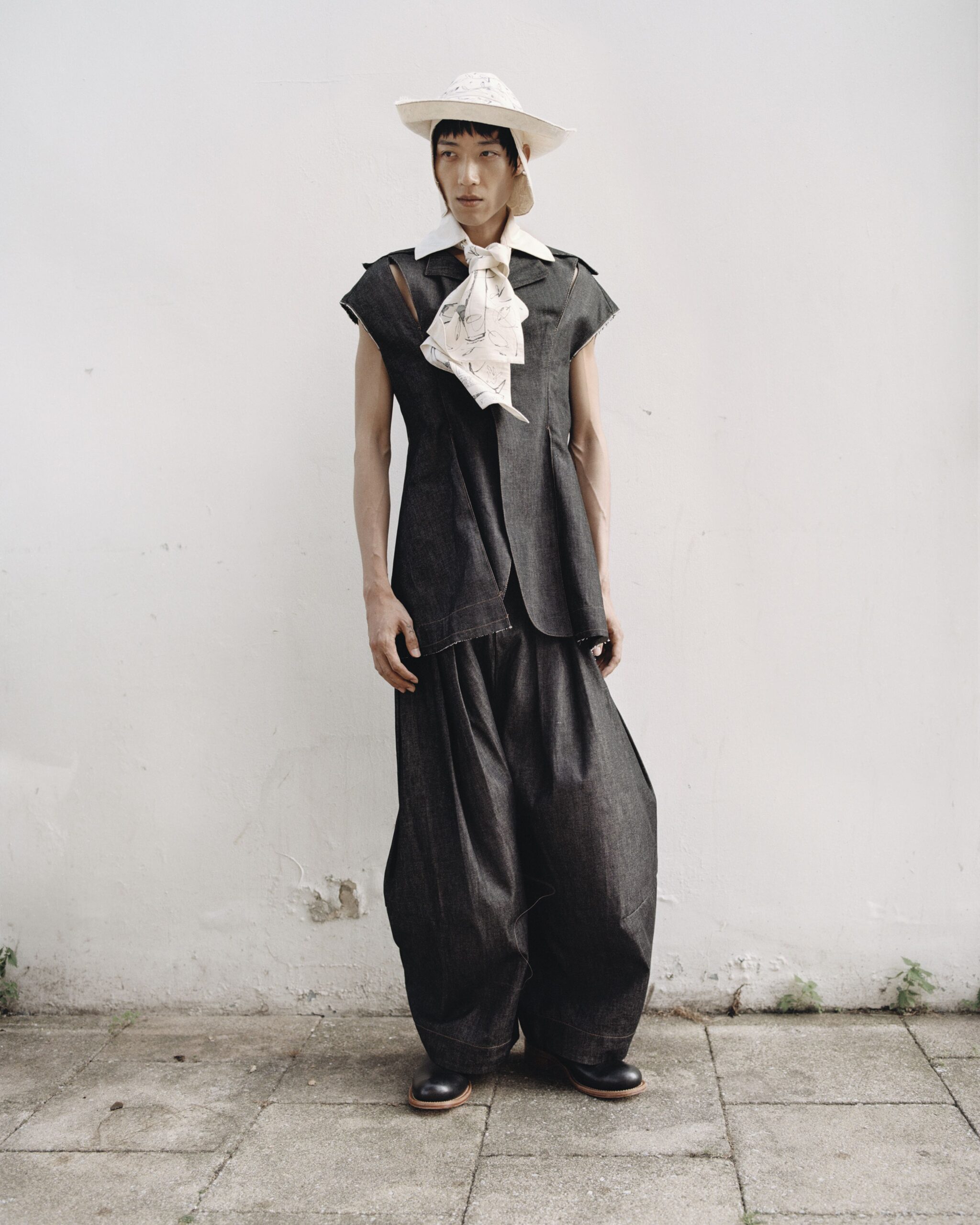
Words by Ella Paritsky
Photography by Vasily Agrenenko
Styling by Pierre-Alexandre Fillaire
Hair by Mayuko Nakae
Modelled by Chovy @ XDIRECTN
All clothing Tíscar Espadas
All shoes The Backward Vendor